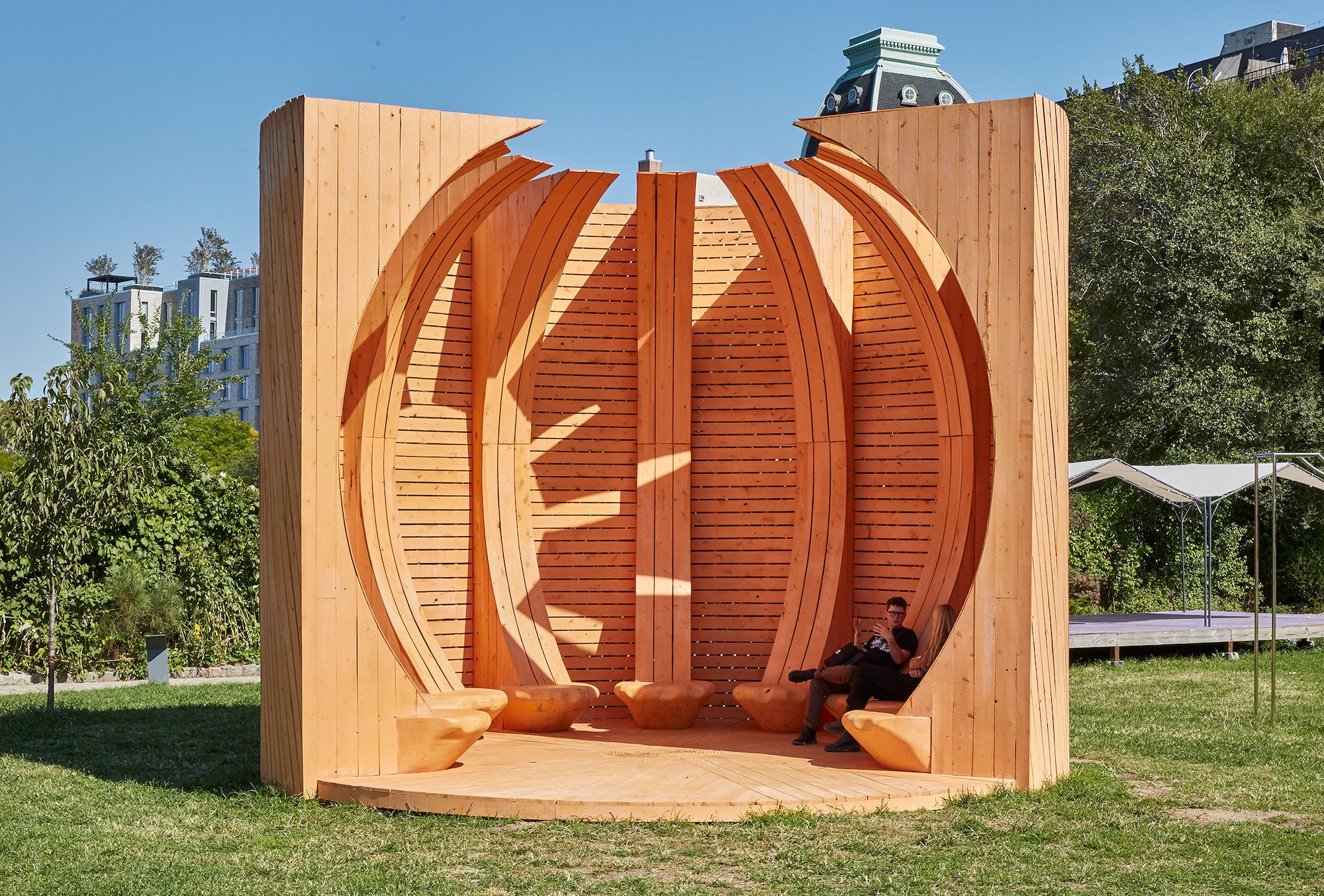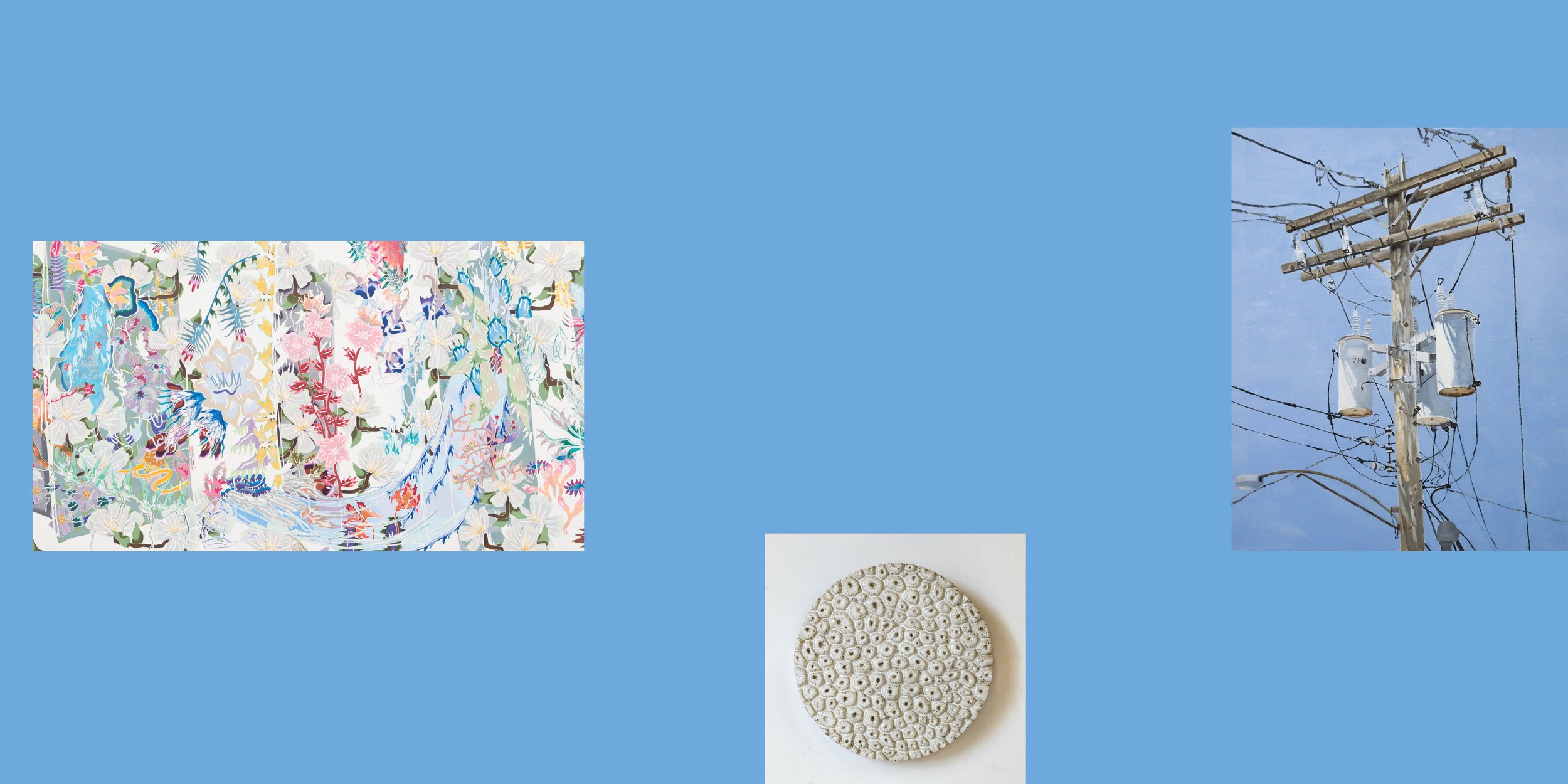
April
Alexander
Russi
Alexander Russi is an observer: his most recent paintings depict the vegetables and pollinators blooming in the backyard garden he shares with his girlfriend in Bed-Stuy, Brooklyn, where he examines the plants and the small, fecund ecosystem they’ve created. In Russi’s paintings, the garden blossoms at Ferngully scale: leaves and petals are gargantuan, enfolding and swooping across each other in a tangled maze. Signs of the urban environment make an occasional appearance—a wrought-iron gate, a flash of brick wall—and debunk the apparent forest.
The city is no detractor from the magic; for Russi, every facet of the landscape is interconnected. While at Fountainhead’s Climate and Sustainability Residency, “one of the words that kept coming up in our studio visits was ‘entanglement,’” he said. “I was thinking about entanglement as a form of communication.” He describes one of his paintings, Transformer (2022), which renders a telephone pole stark and towering against a periwinkle sky. It’s easy to imagine what might be below: sidewalks traversed by neighbors, rows of stoops, the inherent interconnectedness of a community. “The telephone pole is a monument to that sense of entanglement—a broader sense of communication that involves this infrastructure.”
Here in Miami, Russi observed and painted mangroves (Brackish, 2023), their sturdy roots protecting the coast from storms, and an elevated midcentury home in the city’s Morningside neighborhood —its concrete stilts acting as protectors, too. “This way of looking,” he explained, “is sometimes just about being a neighbor, finding a connection through the world around you. I thought about how mangroves are at the forefront of where the water rises; that led me to the house painting, thinking about these water levels. When you invest in the way you look at things, you might see nature looking back at you, too.”
–Monica Uszerowicz
Alexander Russi’s residency was generously sponsored by Jane Wesman.
Morningside (2023); oil on canvas.
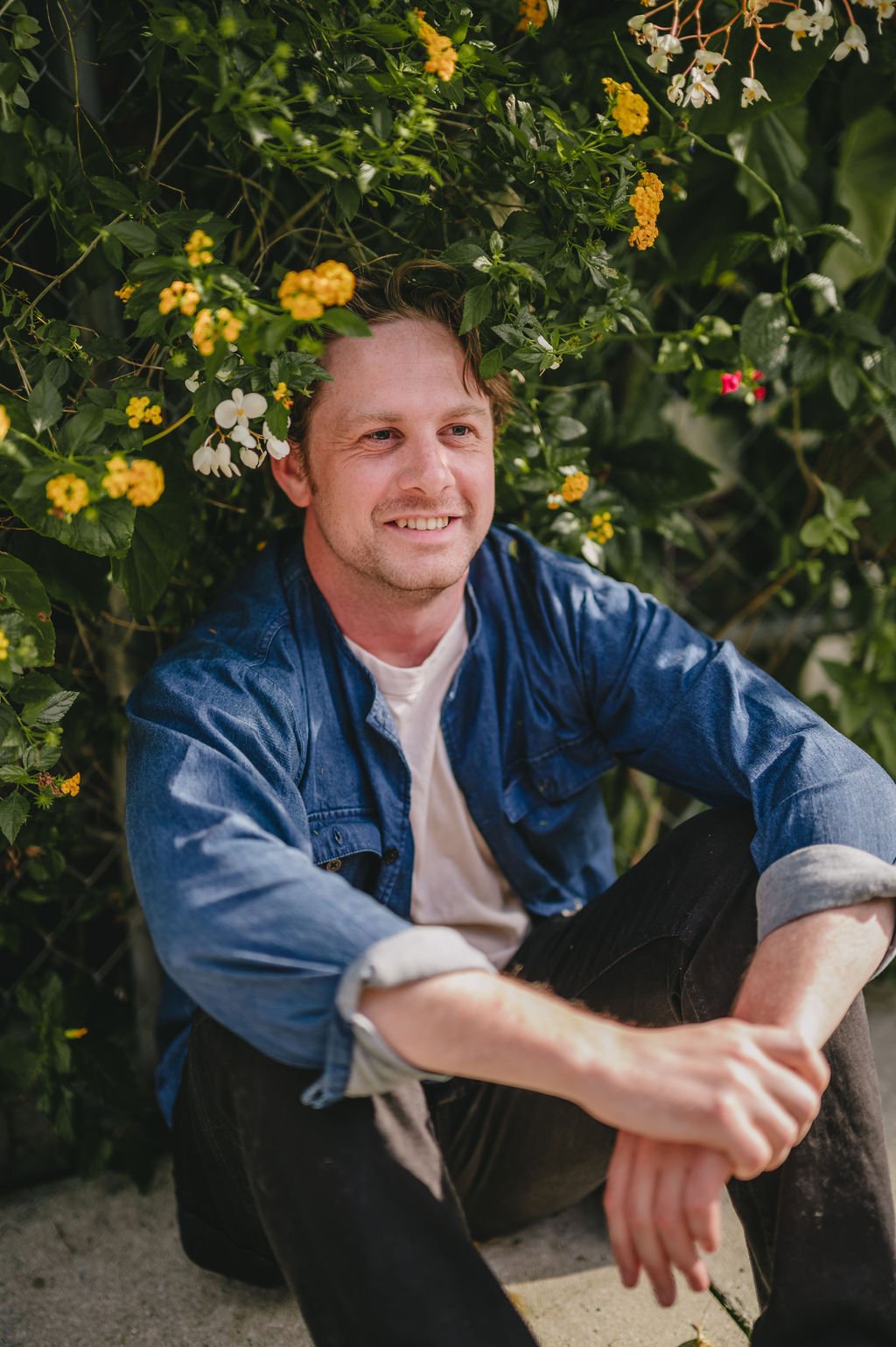
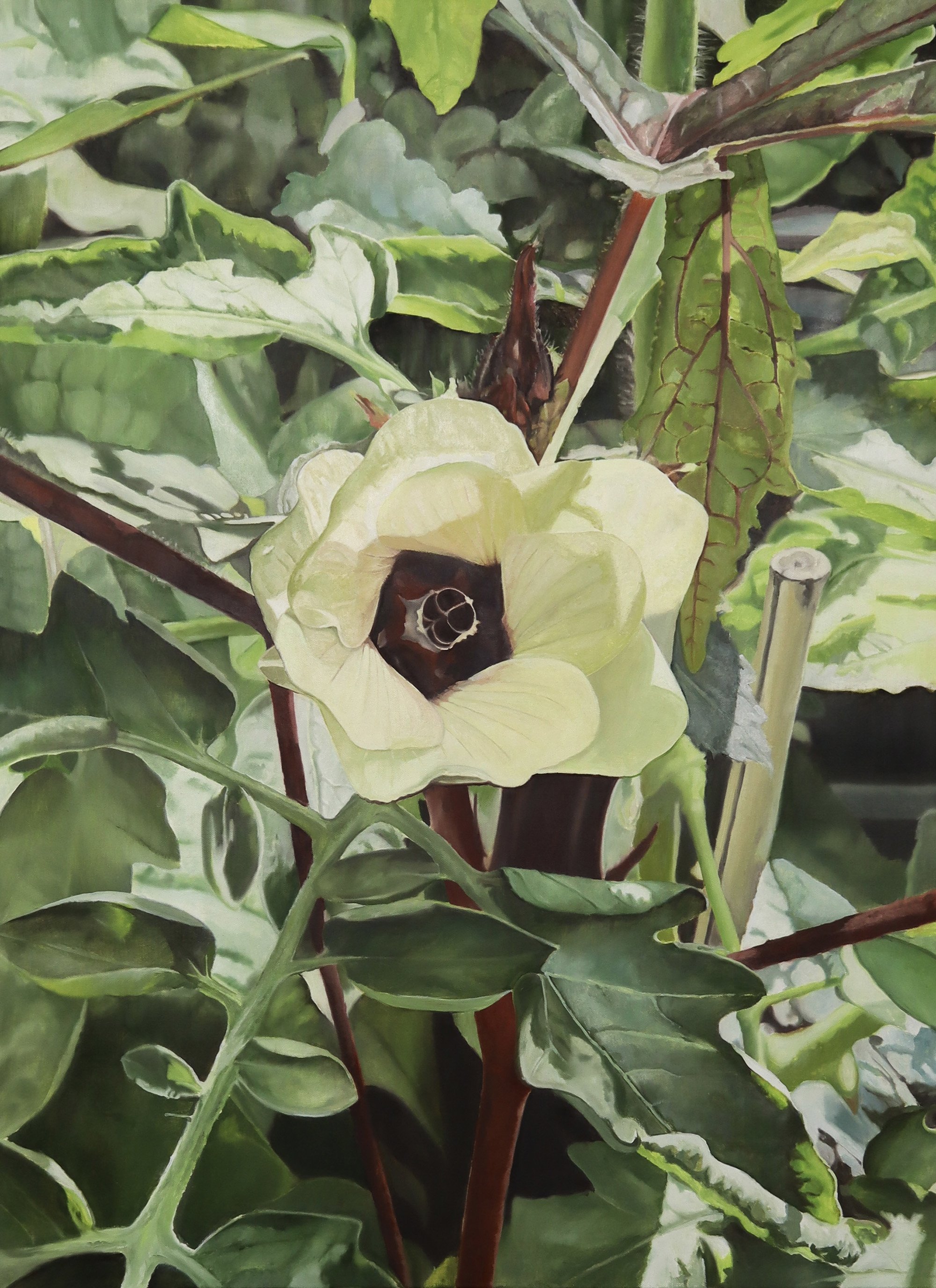
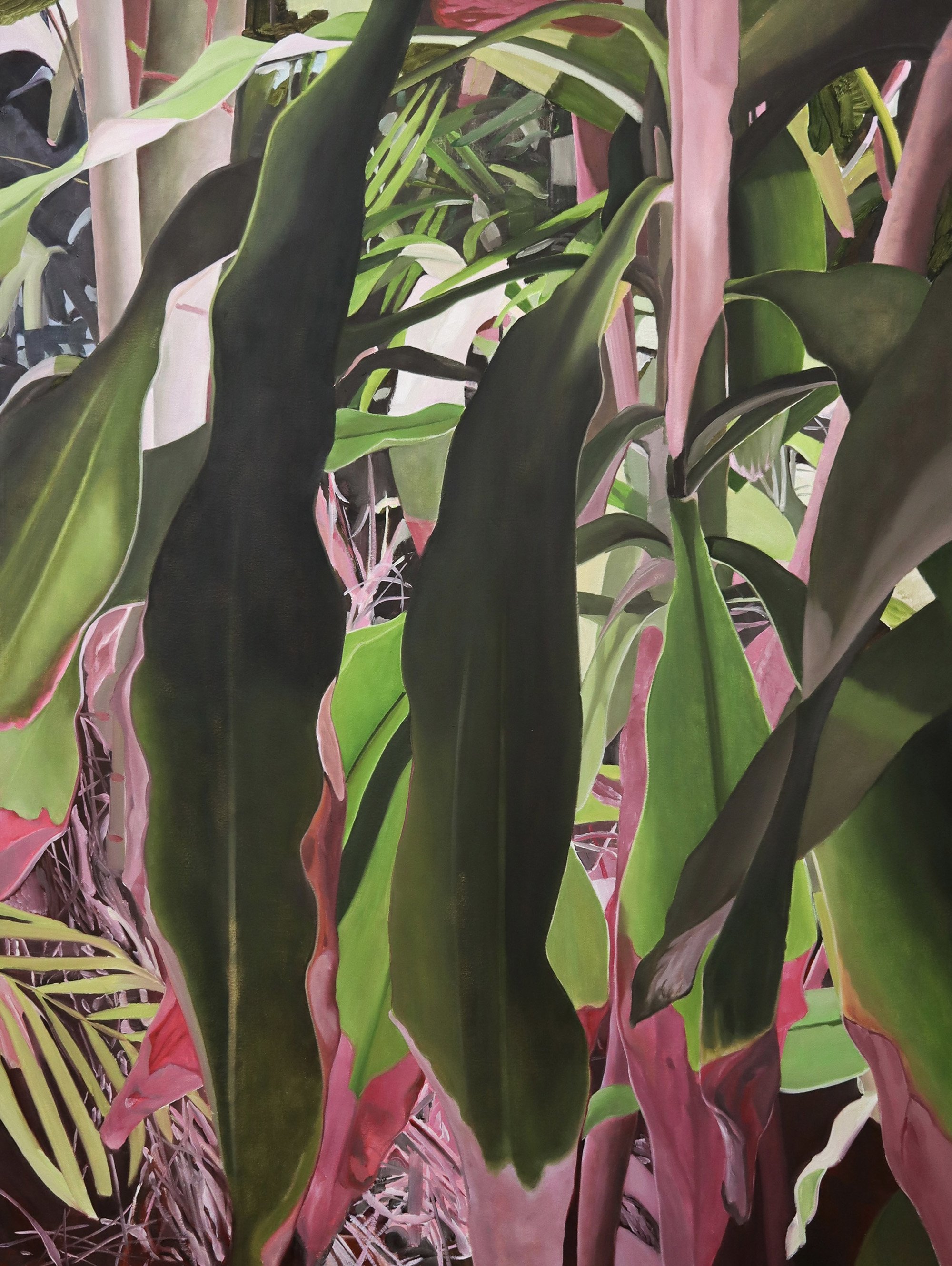
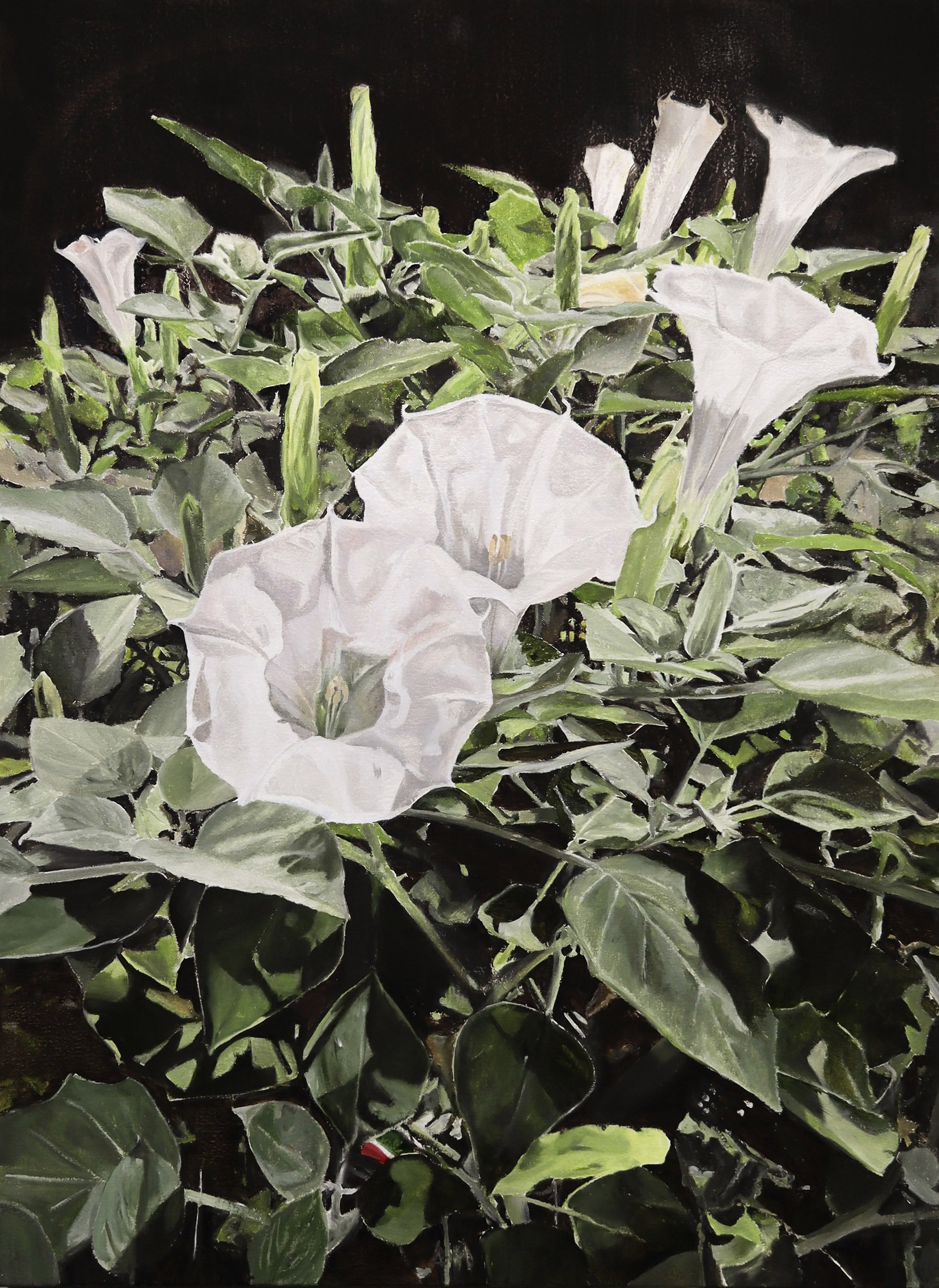
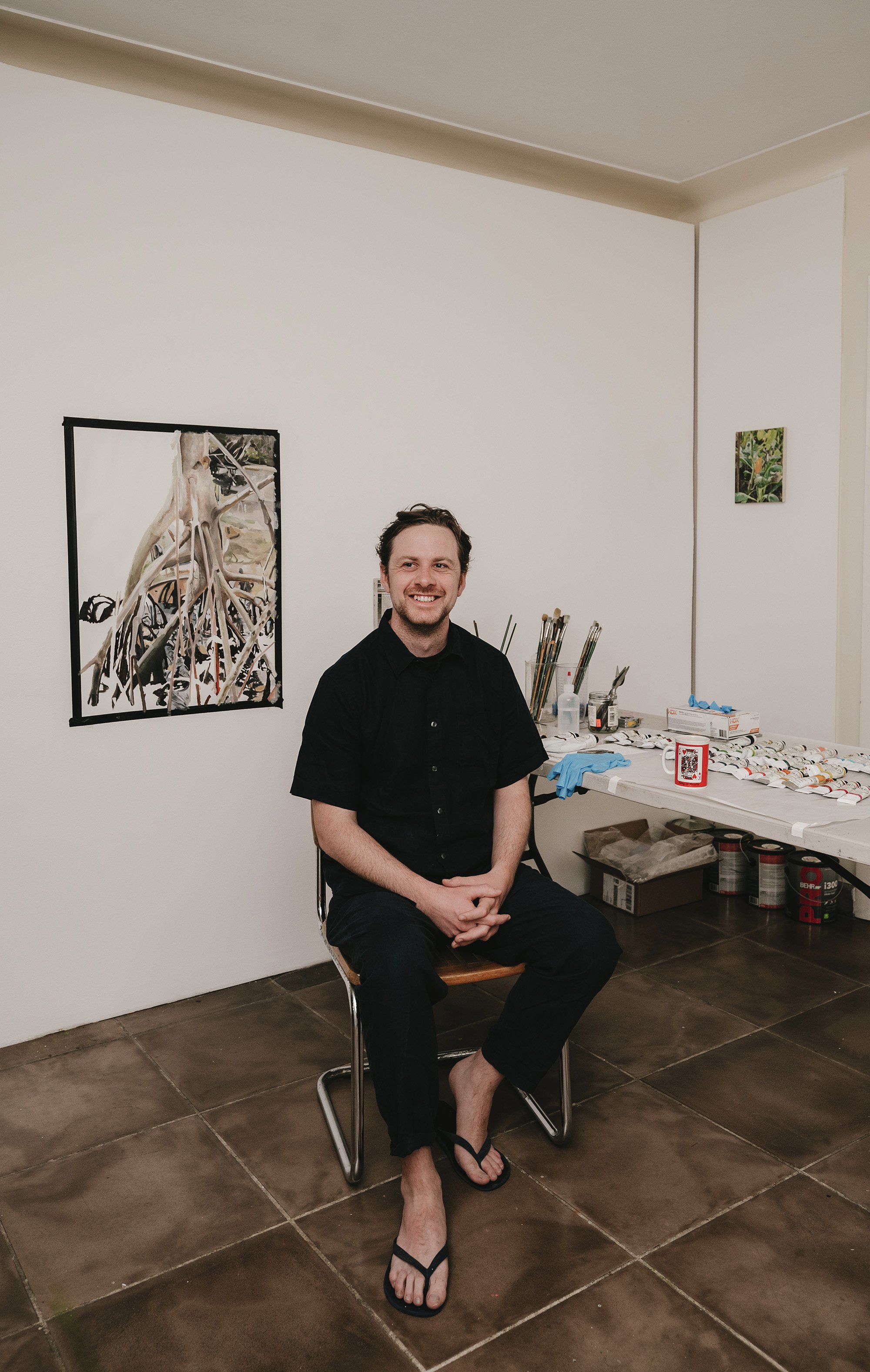

Clockwise from left: Alexander Russi photographed by Carolina Menendez, in the surroundings that most inspire him. Okra (2023); oil on canvas. Fountain (2023); oil on canvas. Russi in his studio at Fountainhead, photographed by Menendez. Nightshade (2022); oil on canvas.
Randi
Renate
Randi Renate’s biography explains that she was born en caul—encased in an amniotic sac. En caul births are sometimes called mermaid births; Renate knows the poetry of her origin story. “I’ve always felt at home in the ocean…free of feeling the weight of the earth, of gravity,” she said. Her high school offered a summer program at the University of Hawaii, where Renate participated in underwater labs and drew corals; in college, she pursued a marine biology degree before switching to studio art.
Today, Renate’s studio is her lab: part of her multidisciplinary practice includes research in the fields of cognitive science and marine biology, and recording CORALESCENCE, a podcast for which she interviews ecologists. Corals are perhaps Renate’s most significant muse; she considers them teachers. “How do corals have proprioception (the sense that lets us perceive the location, movement, and action of parts of the body) in the way that we might? Everything’s so defined by human ontology. It’s interesting to look at these creatures and learn from them.” For the 2022 Socrates Annual Fellowship program, Sink or Swim: Climate Futures, Renate created Are we psychic coral-polyps? (2022), a cedar, orb-shaped sculpture in which Socrates Sculpture Park visitors could rest and recline, together. The piece draws its shape and purpose from the symbiosis of corals, who thrive collectively, despite the ocean’s continued accumulation of human waste and damage.
It’s this punitive relationship between humanity and the rest of the ecosystem that Renate seeks to invert: What if we understood that we are meant to exist in symbiosis with the planet? In the water, Renate finds glimpses of these possibilities. “There’s this moment when you’re swimming…and you lose the physical edges of your body,” she said. “Living on this earth confines us to our bodies—the way they’re perceived and politicized. In that aqueous space, we transcend or morph into something else.”
–Monica Uszerowicz
Randi Renate’s residency was generously sponsored by Jane Wesman.
are we psychic coral polyps? (2022); cedar and casein paint.
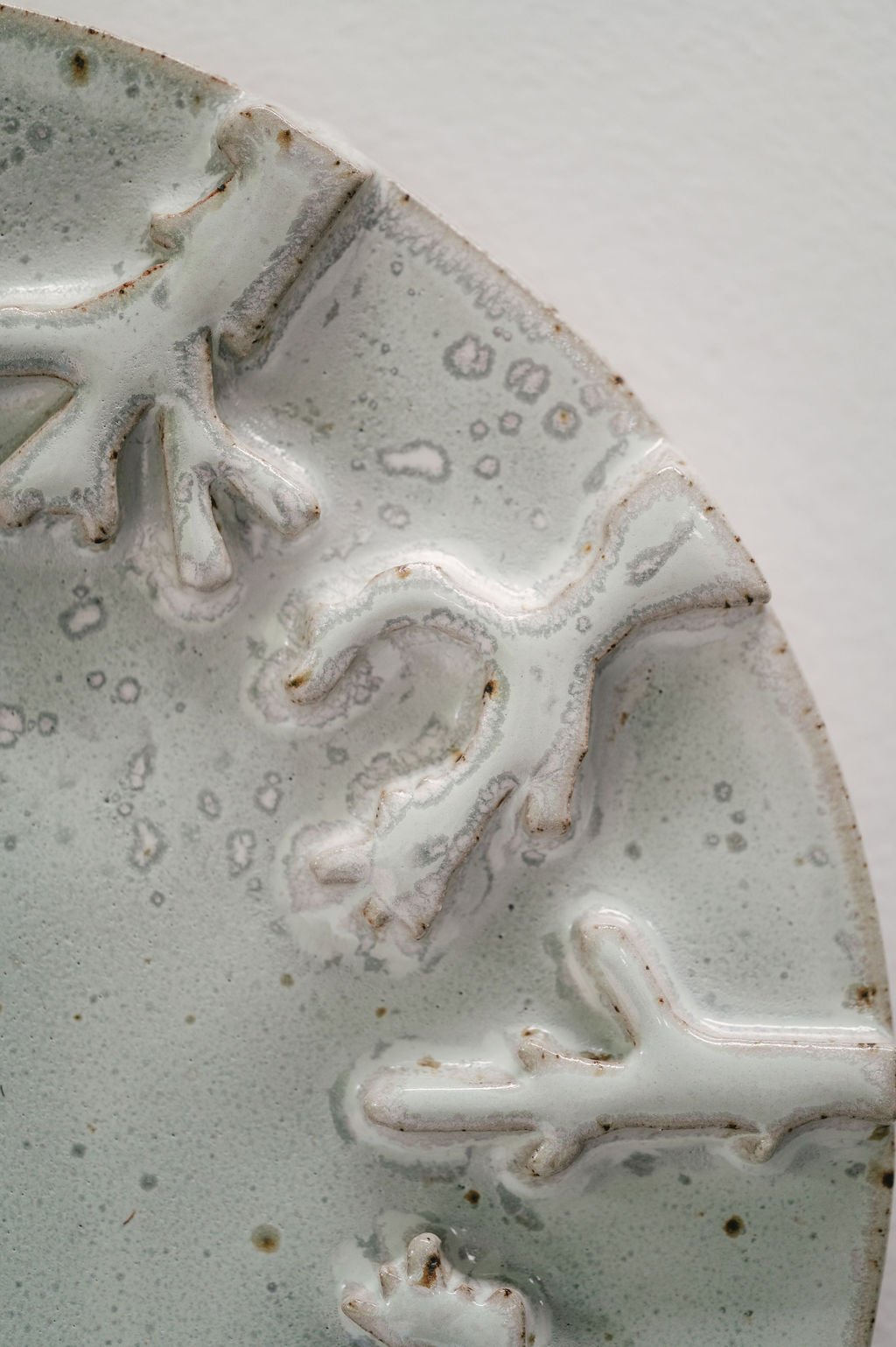
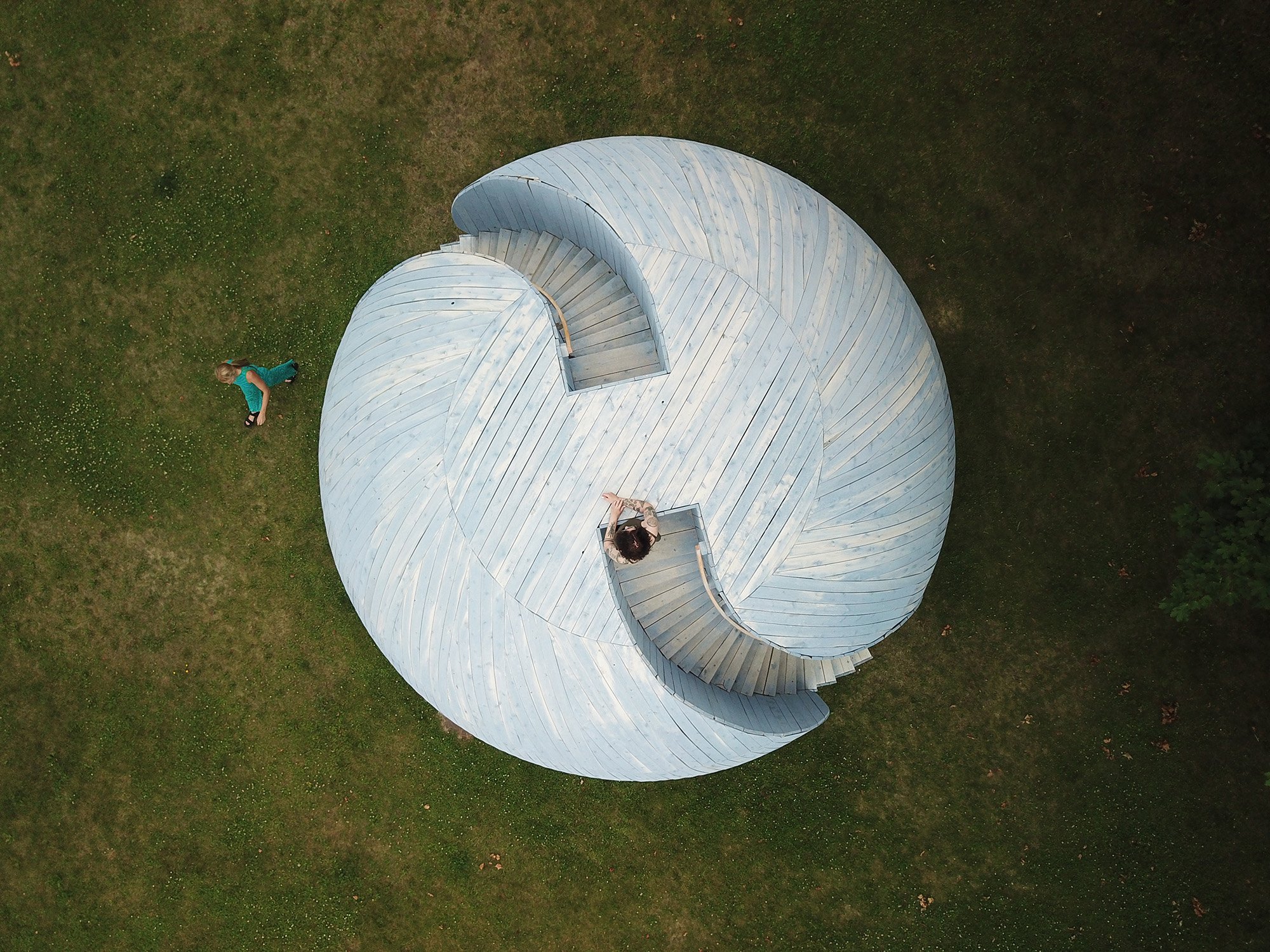
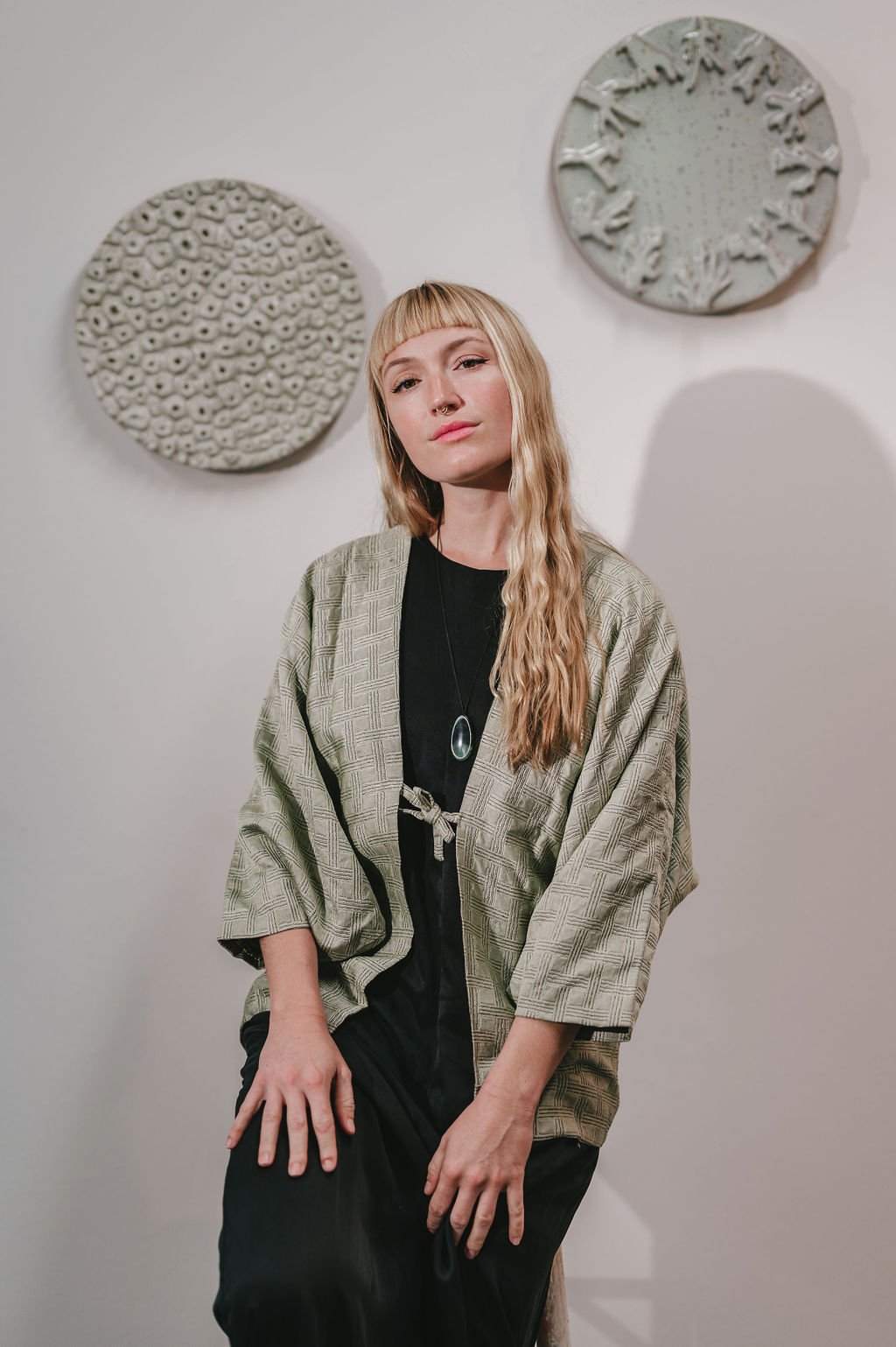
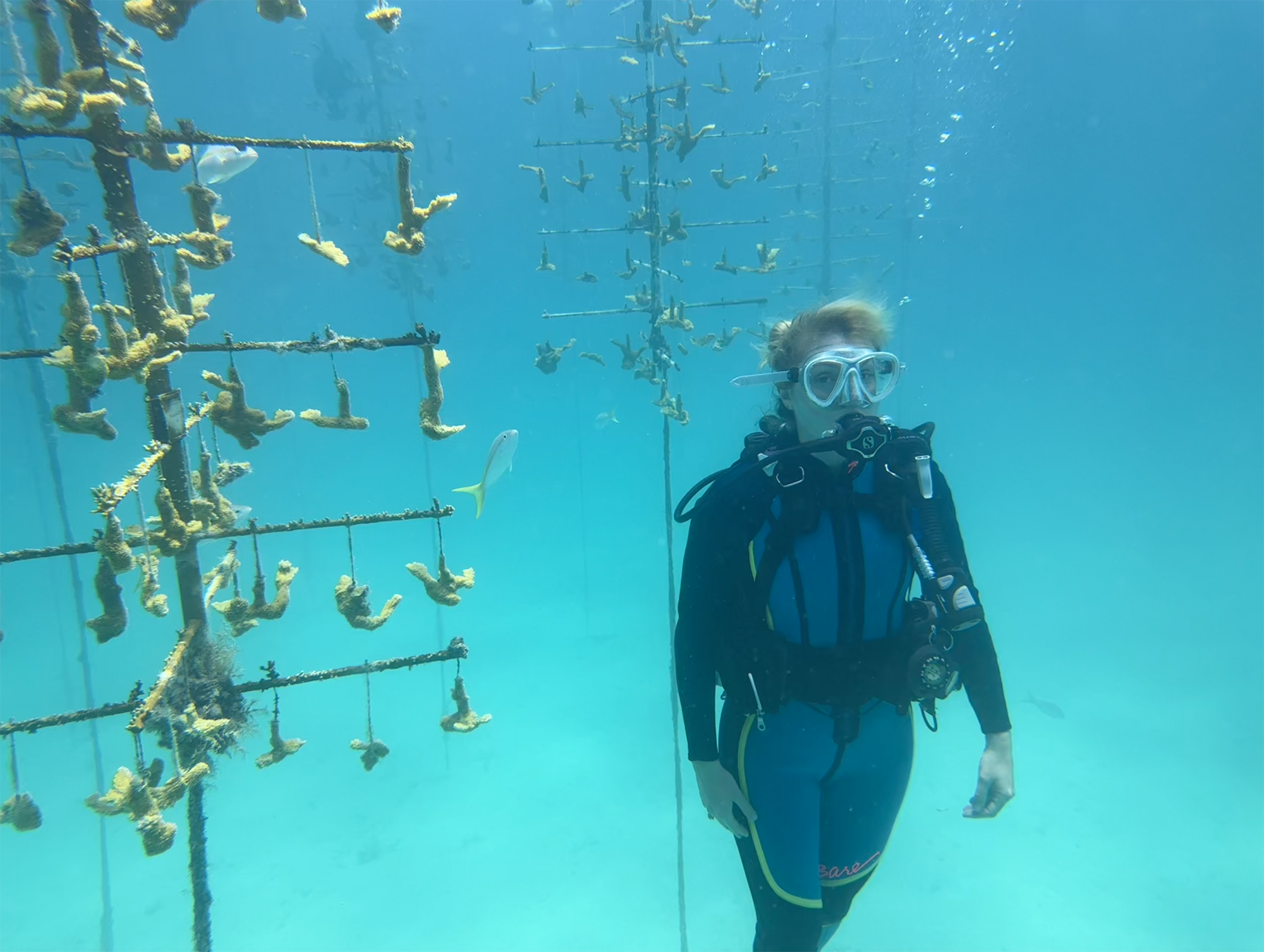

Clockwise from left: Detail of the acropora are now on our anthropogenic time zone .001 (2023); glazed stoneware. blue is the atmospheric refraction I see you through (2021) cedar, casein paint, steel. A portrait of Randi Renate in her studio at Fountainhead Residency, photographed by Carolina Menendez. Renate carves into a ceramic work in progress in the studio. Renate’s work is deeply influenced by her diving practice.
Sarah Ann
Weber
When Sarah Ann Weber was learning how to draw and paint, she developed a love for biomorphic abstraction. The contours found in the natural landscape—the cellular DNA of plants, the swirls of seashells—provided unexpected inspiration. “I always gravitated towards books that had photographs of fossils and other organic shapes. So many organic forms, especially on the cellular level, are abstract. When I moved to California nine years ago, I saw so much abstraction in the physical landscape,” she said.
Today, Weber’s landscapes are inspired by nature and wildlife, to be sure, but her scenes burst into surreal kaleidoscopes of color, movement, and tenderness. Neon-bright vines and leaves encircle femme figures, petals, and each other in soft contours; the artist combines precise pencil drawings with finger-swirled oil paint, a contrast that emphasizes her works’ inherent sense of play. But look closer, between the blooms and blossoms, the dripping pollen: there’s a dagger. A transparent skeleton hides in the soil. The potted plant is drooping.
“With as much growth as there is, there’s also decay,” said Weber. “Sometimes the way I’m camouflaging the figures in the environment can feel violent—or like they’re disappearing into a more aggressive, plant-driven world. Decentralizing the figure is important to my work.” She references What is it that will last? (2021), a reprise of Manet’s Luncheon on the Grass; in Weber’s rendering, the men have been completely replaced by feminine figures. The dominance of men, over both femmes and the Earth, has been subverted. Women are central, merging with their psychedelic surroundings. “When you look at Romantic-era paintings, most of them were made by men, and man is dominating the natural world there,” she explained. “I want to turn that on its head—I want humans to have a much more holistic relationship to the landscape.”
–Monica Uszerowicz
Sarah Ann Weber’s residency was generously sponsored by Jane Wesman.
Clos Normand (2023); watercolor and colored pencil on paper mounted on linen over panel.
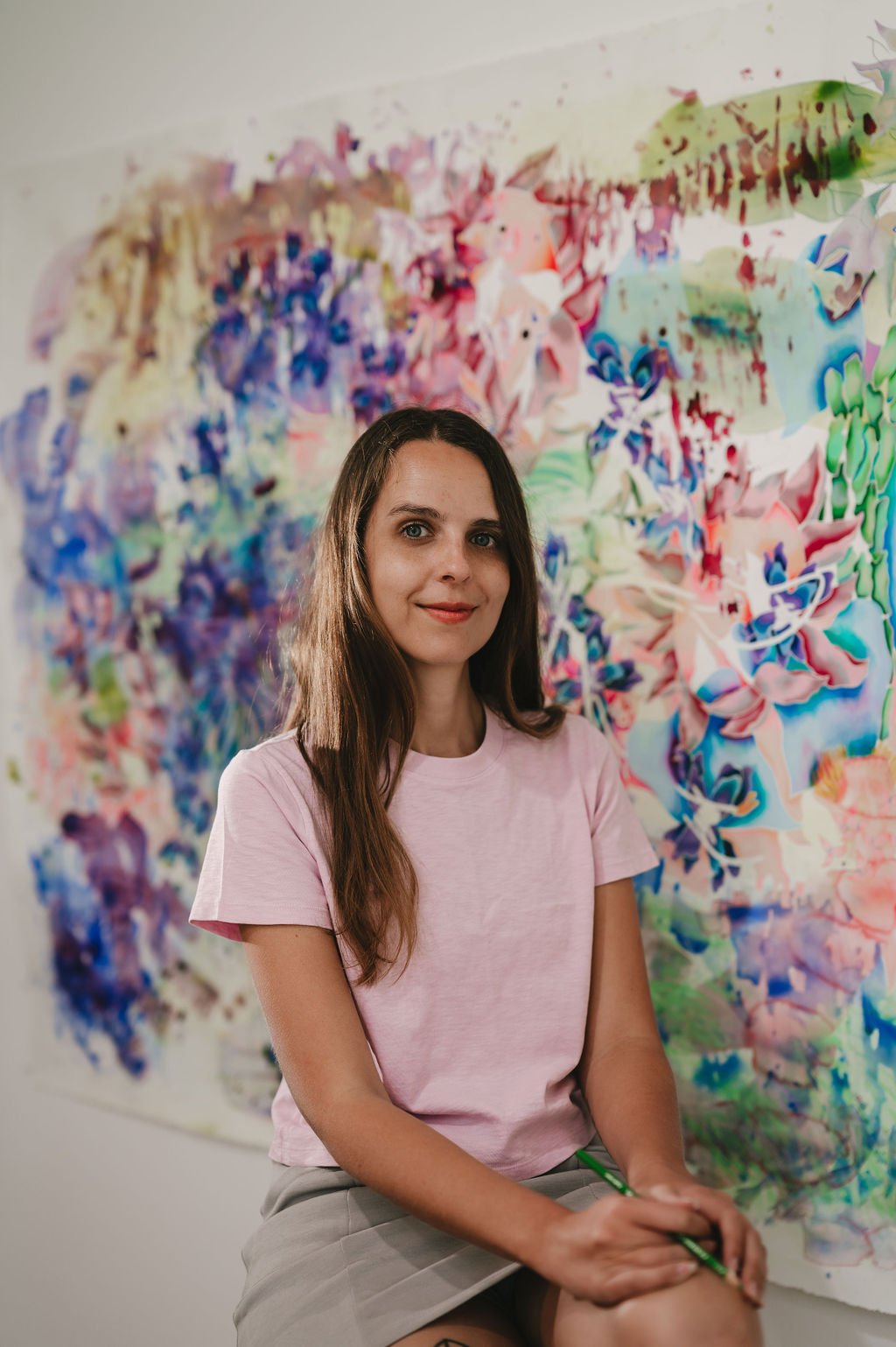
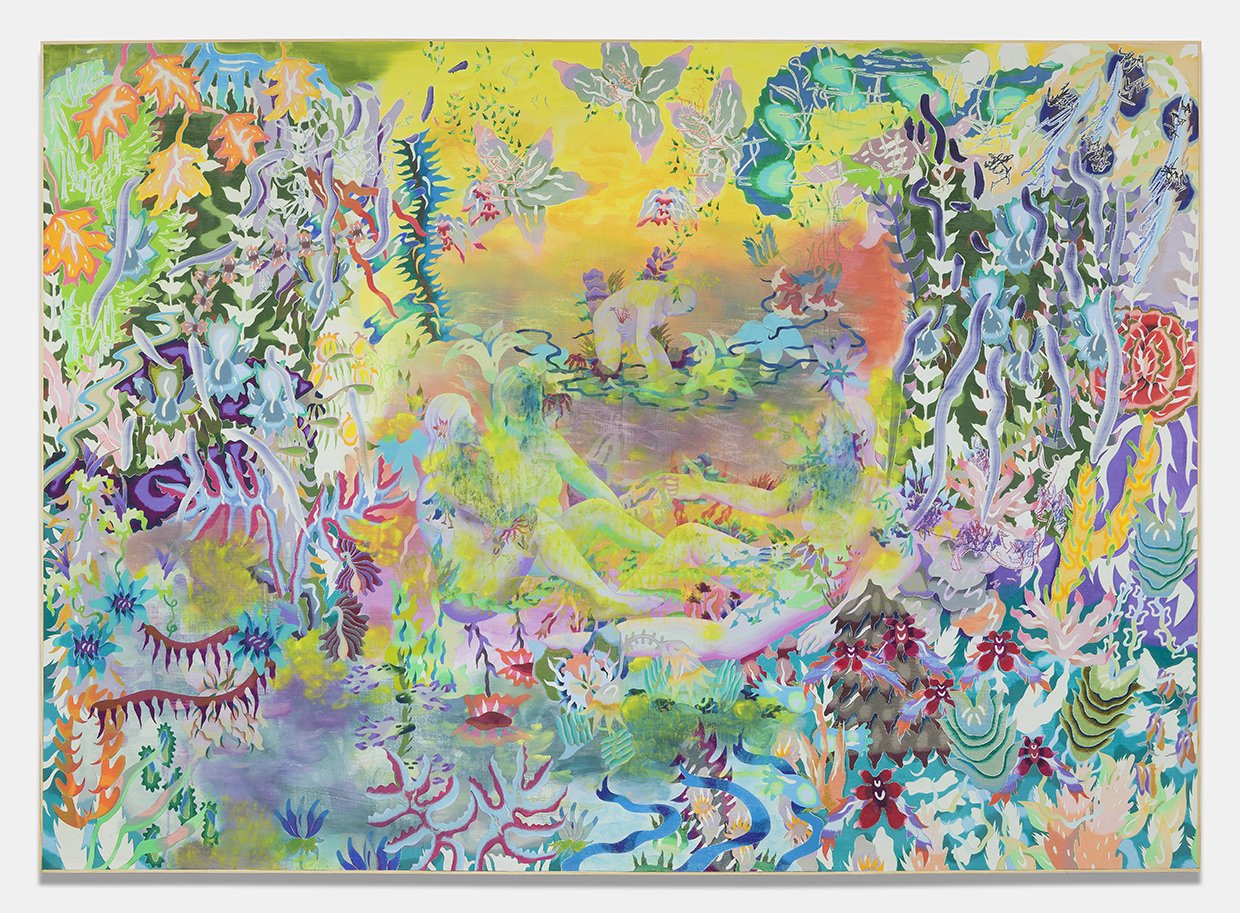
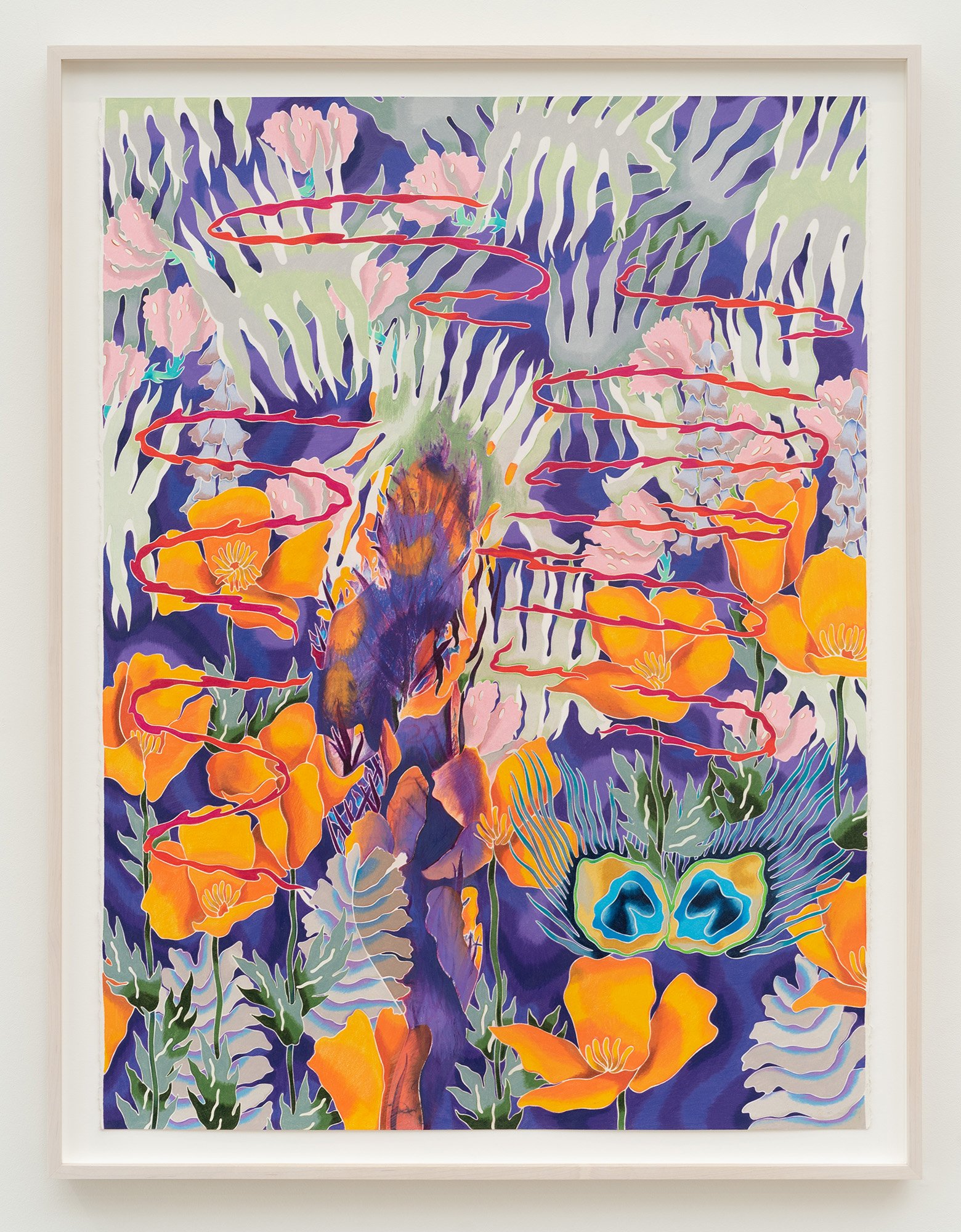

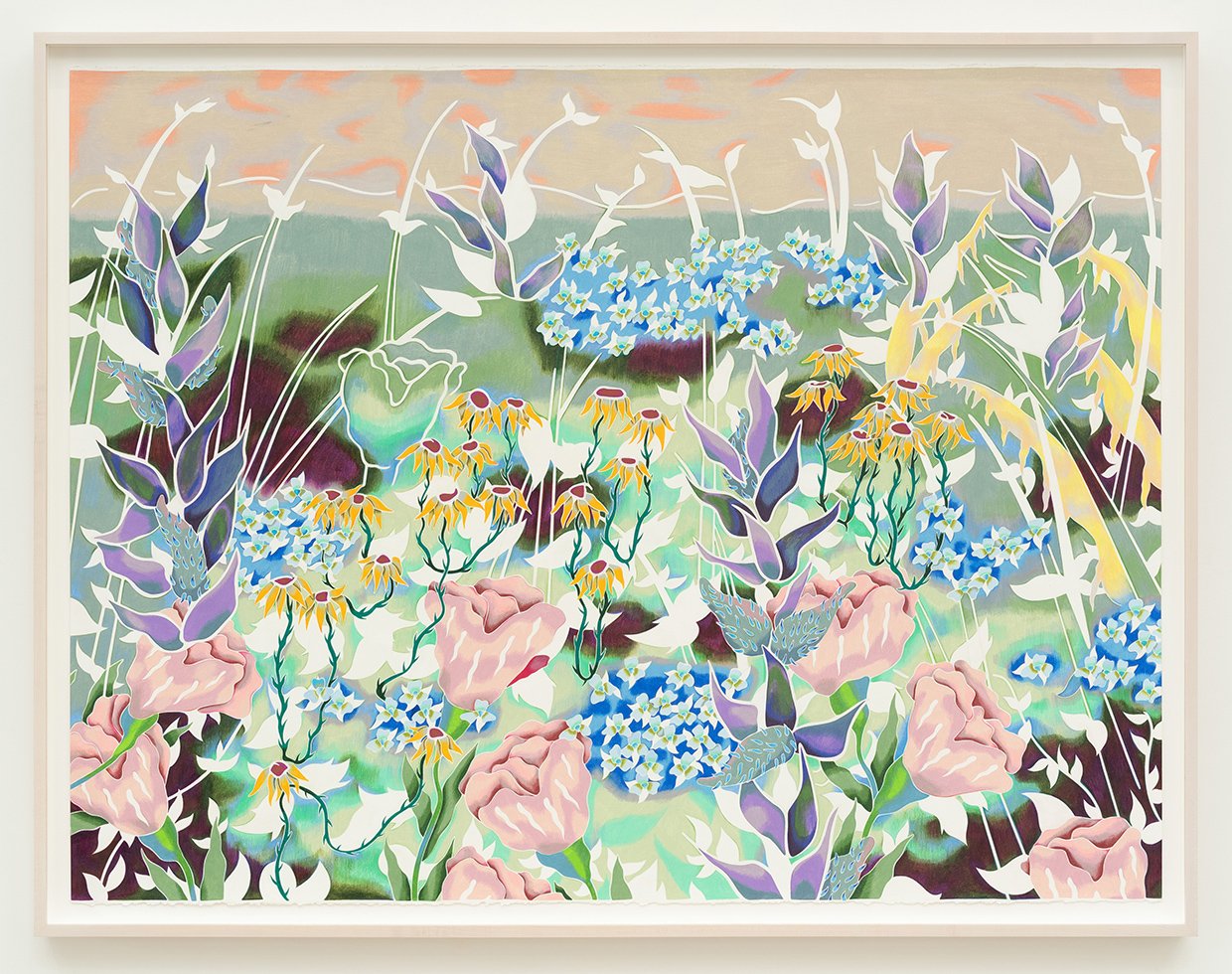
Clockwise from left: A portrait of Sarah Ann Weber by Carolina Menendez. What is it that will last? (2021); oil and colored pencil on panel, image courtesy of the artist and Anat Ebgi Gallery. Suncatching (2021); colored pencil on paper, framed. Prairie State (2022); colored pencil on paper. Image courtesy of the artist and Anat Ebgi Gallery. Watching Weber work in front of one of her drawings allows the viewer to register the scale, as captured here by Menendez.


